In June, the elk meadow hosts the small, elaborately petaled Rocky Mountain Wild Iris (Iris Missouriensis). It’s also called Western Blue Flag, water flag, and Missouri Flag. While this wild iris can be found throughout the western US, from sea level to high montane, this shorter, smaller, high elevation variation requires close observation to appreciate it, which means sitting down in the meadow. Watch where you sit, there are ‘elk-duds’ everywhere.
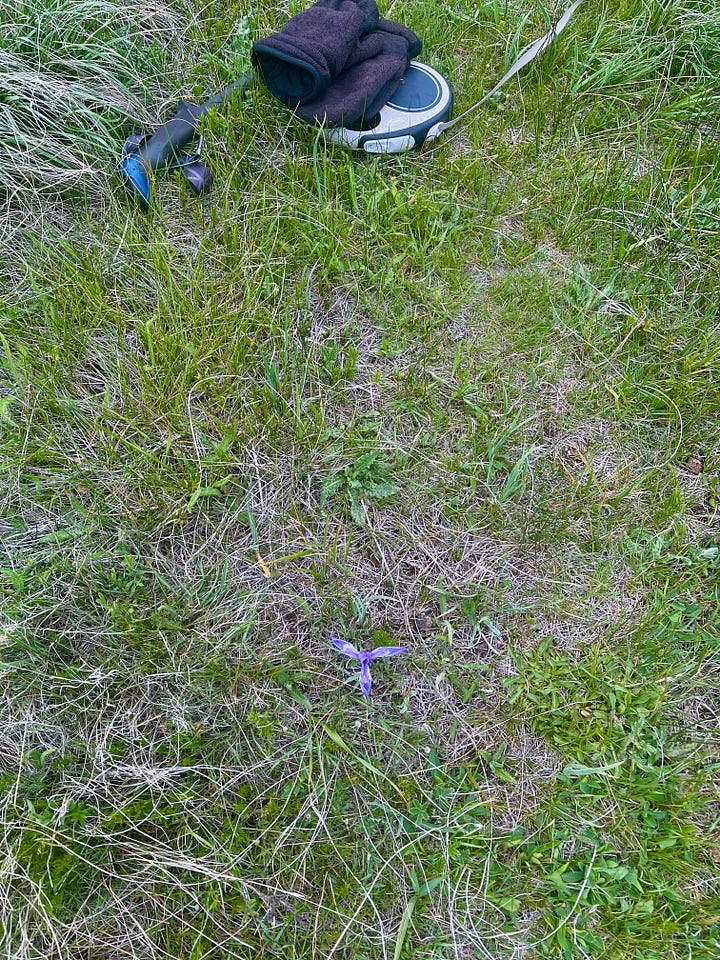

Getting down to iris level shows just how many of them have bloomed around me. A good dozen of them can be found in a patch just off the wetlands. Some have yet to bloom, hinting with the intricately formed, colored and folded bud. It is as interesting as the flower itself.
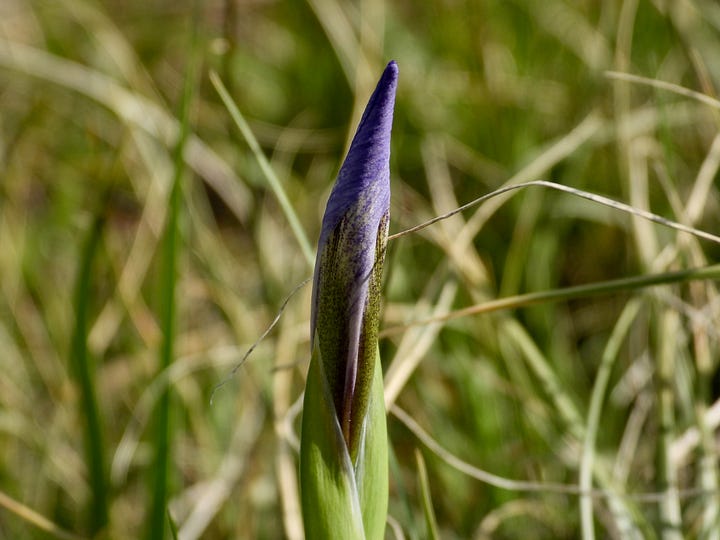
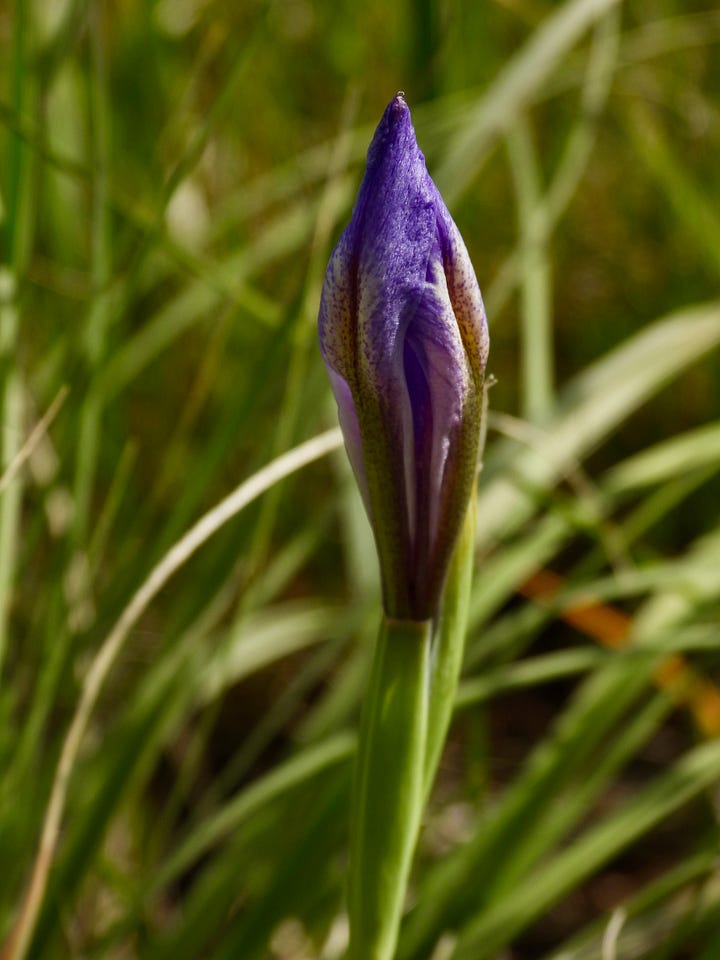
Growing shorter than their garden cousins, most reach a height of only 8-12 inches with the bloom about 3 inches wide. Tromping feet will walk right by them. The elk and moose tromp through, but they avoid the iris, as they can smell it and know it to be toxic.
But it doesn’t bloom for the elk, the moose, or the humans. It blooms for the pollinators, enticed by the runway striped petals (known as ‘nectar guides’), steering pollinators to the good stuff. It’s a favorite of bumblebees, moths, and other larger pollinators.
While this iris is native to the West, many ranchers consider it invasive in their pastures, as it’s notably toxic to the cattle. The cattle find it bitter and distasteful, though, so it generally gets left alone to focus on its pollinators.
Humans, however, have found a number of uses for this small flower. The fibers in the leaves have been used to make cordage ropes for fish nets, string, rope, snares, and other uses. Their strong fibers are thin, silky, strong, and very labor-intensive to acquire, but the labor is worth it for the product.

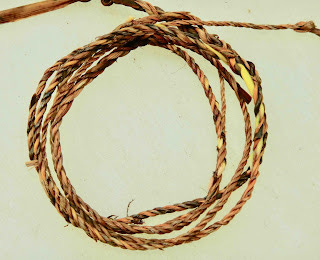
Medicinally, the Wild Iris rhizome (root), made into a poultice, is very effective when applied to staph infections, external ulcers, and other wounds. Using the dried rhizome internally is also beneficial, but only under the expert supervision of a natural herbalist. Don’t try this at home!
For me, I’ll leave them be and step carefully, appreciating them close up when out in the meadow in June.
Sources:
- https://www.fs.usda.gov/managing-land/wildflowers/plant-of-the-week/Iris-missouriensis
- https://en.wikipedia.org/wiki/Iris_missouriensis
- https://plants.usda.gov/DocumentLibrary/plantguide/pdf/pg_irmi.pdf
- https://theamericanirissociety.blogspot.com/2018/04/cords-and-ropes-from-pacifica-iris.html
📷 All photos are credited: The Abert Essays unless otherwise noted.
📱 Join me on my Facebook page, Substack Notes, and my new BlueSky page. I post smaller ‘Encounters’ posts there as I see flowers, animals, weather patterns, and anything else that catches my eye.






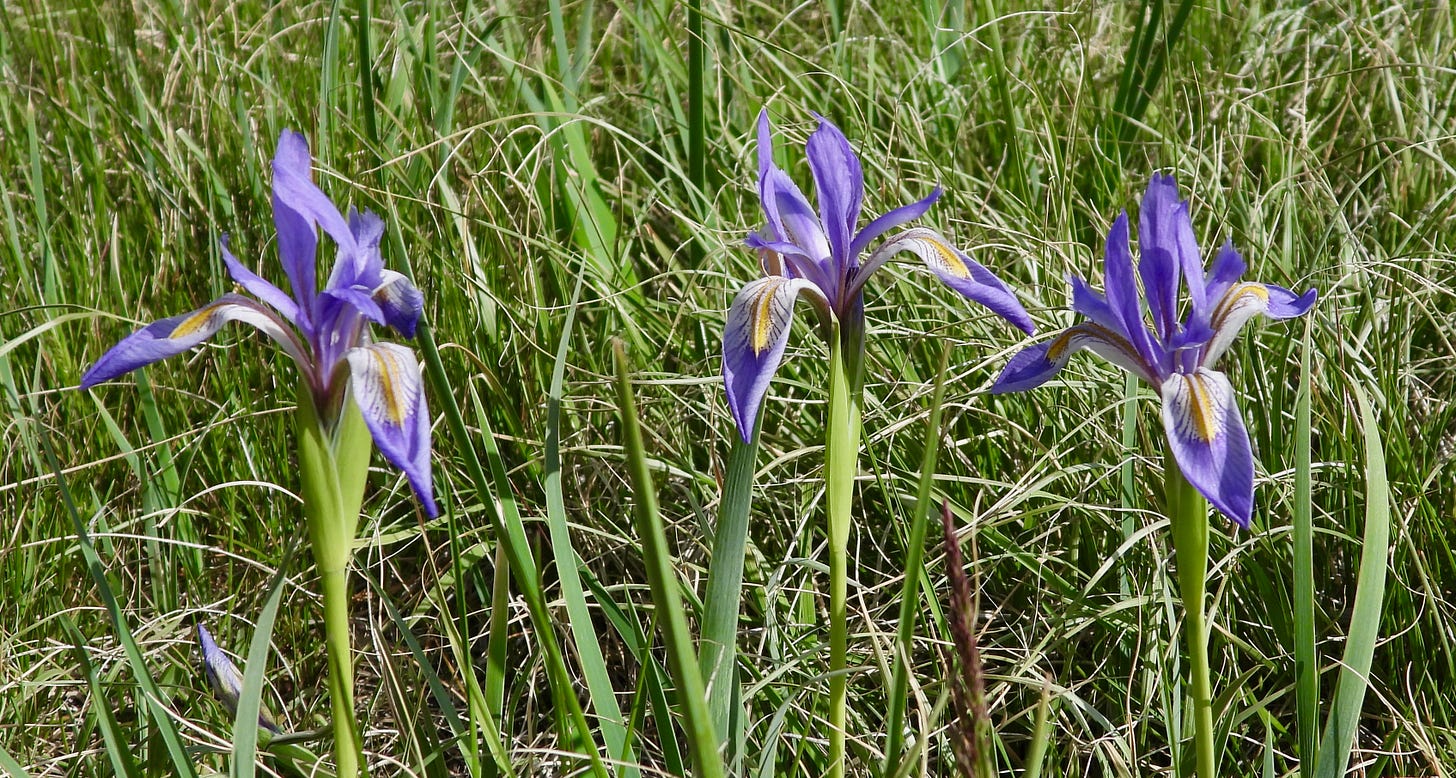
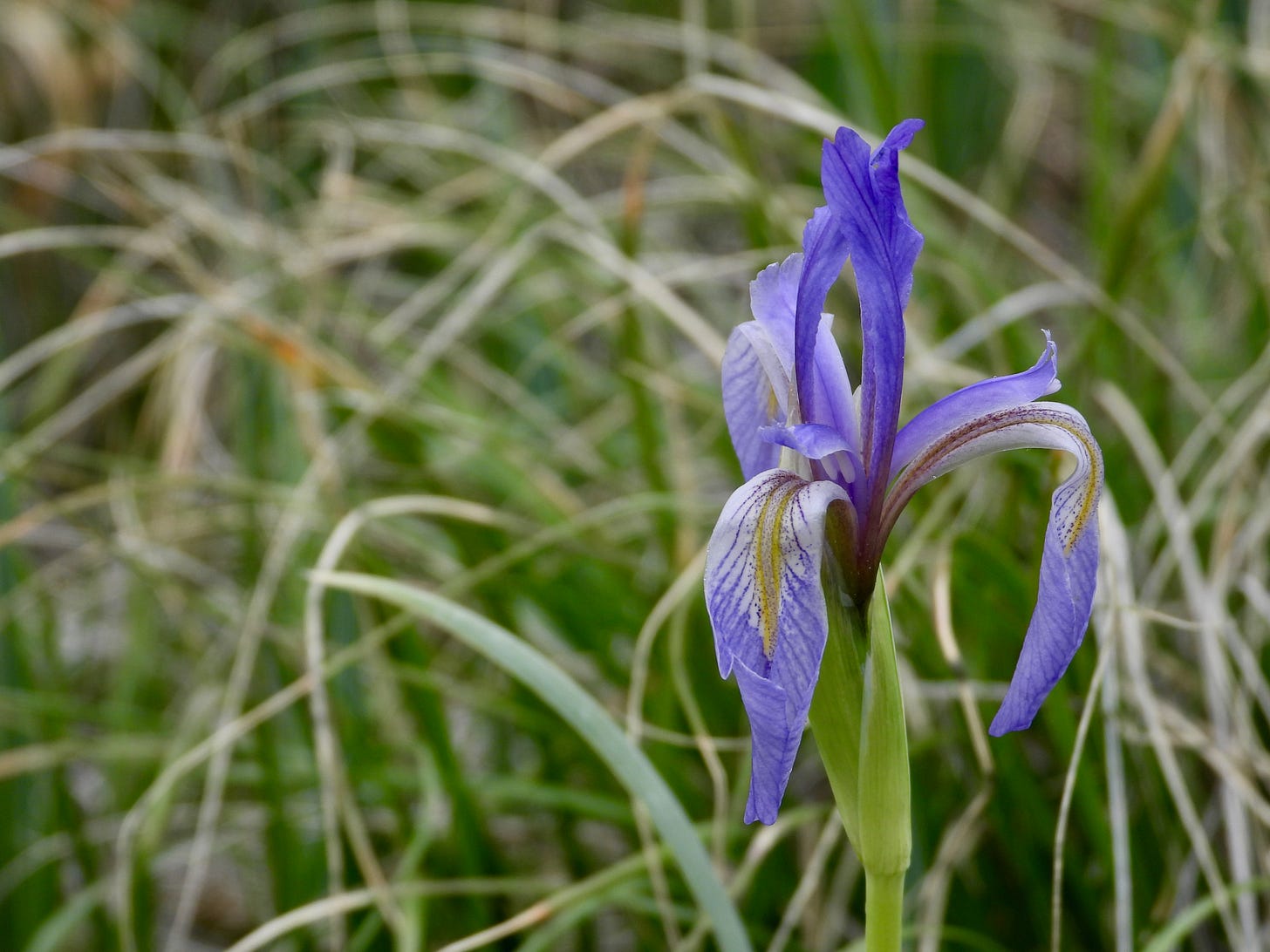

Thank you.
We enjoy them in Western North Carolina 💫